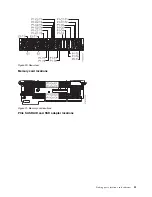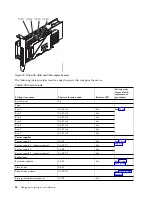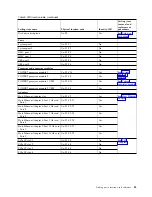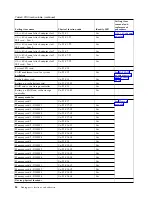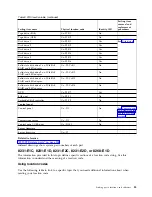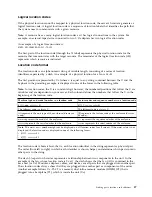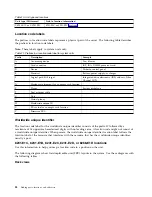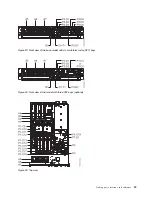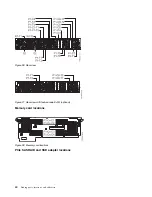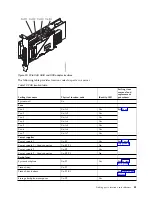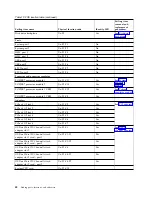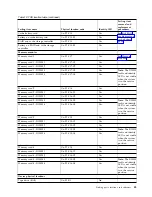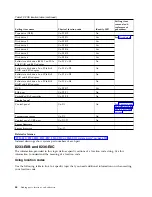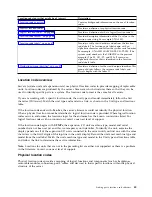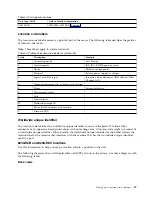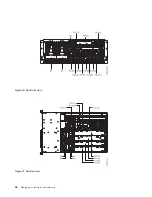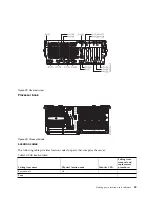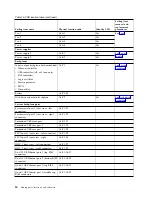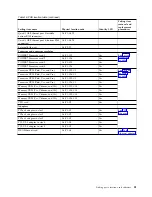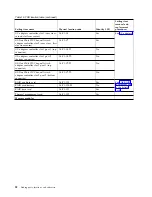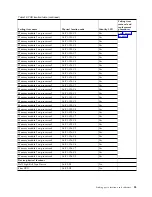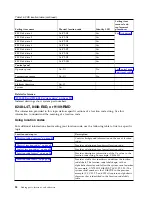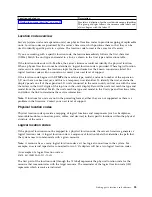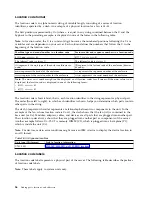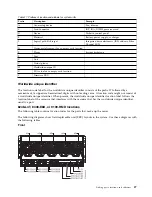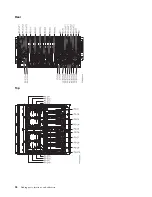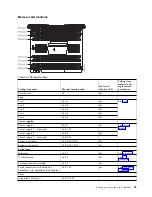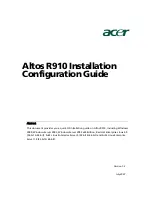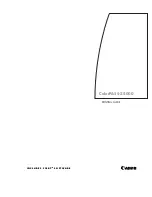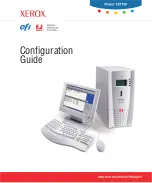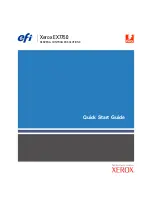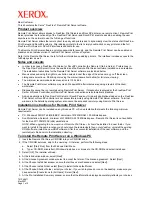
Location code topics that might be of interest
Description
Contains background information on the use of location
codes.
Provides a definition for physical location code.
“Logical location codes” on page 46
Provides a definition of what a logical location code is.
“Location code format” on page 46
Provides descriptive information of the Un value in the
location code string. For example U78A0.001.
“Location code labels” on page 47
Provides a table that identifies and defines the location
code labels. The location code labels begin with an
alphabetic character and follow the system serial number.
For example, U78A0.001.10ABCDE-P3-C31-T2-L23. (The
system serial number is the 10ABCDE in the previous
example.) The P3, C31, T2, and L23 all contain an
alphabetic character that is identified in the Location
code labels table.
“Worldwide unique identifier” on page 47
Provides a definition for the world unique identifier. This
group of digits follows the resource code labels and
always begins with the letter W.
Location code overview
Servers (system unit and expansion units) use physical location codes to provide mapping of replaceable
units. Location codes are produced by the server's firmware, which structures them so that they can be
used to identify specific parts in a system. The location code format is the same for all servers.
If you are working with a specific location code, the unit type and model immediately follow the first
character (Utttt.mmm). Match the unit type and model to a link, as shown in the Unit type and locations
table.
If the location code ends with -Txx-Lxx, the server's firmware could not identify the physical location.
When a physical location cannot be identified, a logical location code is provided. Where logical location
codes occur in enclosures, the locations topic for the enclosure has the known conversions listed. For
logical location codes with no conversion, contact your next level of support.
If the location code begins with UTMPx, the expansion I/O unit's machine type, model and serial
number have not been set yet and this is a temporary unit identifier. To identify the unit, examine the
display panels on all of the expansion I/O units connected to the server until you find one with the same
characters in the first 5 digits of the top line in the unit's display. Record the unit's real machine type and
model from the unit label. Match the unit's machine type and model in the Unit type and locations table
and follow the link to determine the service information.
Note:
Locations for units that are not in the preceding list are either not supported or there is a problem
in the firmware. Contact your next level of support.
Physical location codes
Physical location codes provide a mapping of logical functions and components (such as backplanes,
removable modules, connectors, ports, cables, and devices) to their specific locations within the physical
structure of the server.
Finding parts, locations, and addresses
45
Summary of Contents for Power Systems Series
Page 1: ...Power Systems Finding parts locations and addresses IBM...
Page 2: ......
Page 3: ...Power Systems Finding parts locations and addresses IBM...
Page 19: ...Figure 1 Rack front view Figure 2 Rack top view Finding parts locations and addresses 7...
Page 60: ...Figure 30 Rack front view Figure 31 Rack top view 48 Finding parts locations and addresses...
Page 70: ...Rear Top 58 Finding parts locations and addresses...
Page 80: ...Rear Top 68 Finding parts locations and addresses...
Page 81: ...Midplane I O card Finding parts locations and addresses 69...
Page 100: ...Figure 39 Node locations 88 Finding parts locations and addresses...
Page 111: ...Figure 44 Memory card locations Finding parts locations and addresses 99...
Page 244: ...Final assembly 232 Finding parts locations and addresses...
Page 253: ...Finding parts locations and addresses 241...
Page 288: ...Cover assembly 276 Finding parts locations and addresses...
Page 324: ...312 Finding parts locations and addresses...
Page 335: ...Notices 323...
Page 336: ...IBM Printed in USA...

